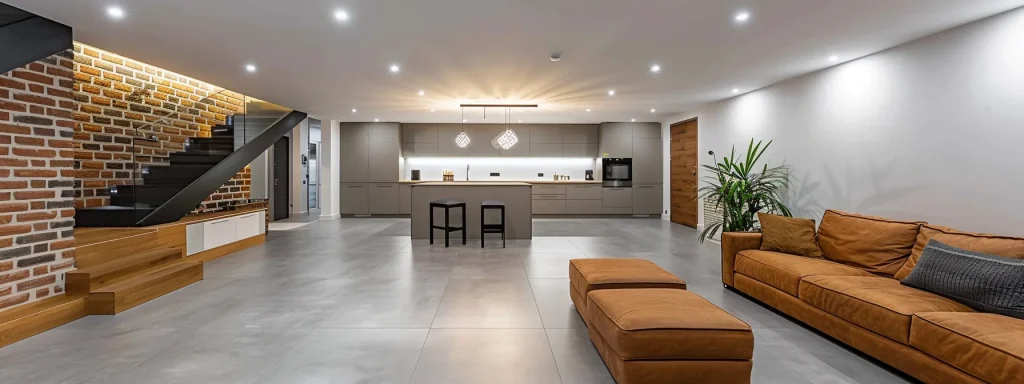Table Of Contents:
- Key Takeaways
- Assessing Your Basement Renovation Needs
- Planning Your Basement Renovation Project
- Comprehensive Breakdown of Basement Renovation Costs
- Strategies to Manage and Reduce Renovation Costs
- Navigating Legal Requirements and Building Codes
- Selecting the Right Professionals for Your Renovation
- Finalizing Your Basement Renovation Checklist
- Conclusion
Are you considering a basement renovation but unsure about the costs and planning involved? This comprehensive guide will walk you through the essential aspects of basement renovations, focusing on budgeting, plumbing considerations, and ceiling and floor options. You’ll learn to assess your needs, plan your project effectively, and manage costs without compromising quality. By the end of this article, you’ll know how to make informed decisions and transform your basement into a functional, valuable space.
Key Takeaways
- Thorough assessment of basement condition is crucial before starting renovations
- Setting clear goals and defining the space’s purpose guides effective renovation planning
- Establishing a realistic budget and timeline helps manage expectations and avoid delays
- Prioritizing essential upgrades like waterproofing and HVAC ensures a functional and comfortable space
- Obtaining necessary permits and adhering to local regulations is vital for legal and safe renovations
Assessing Your Basement Renovation Needs
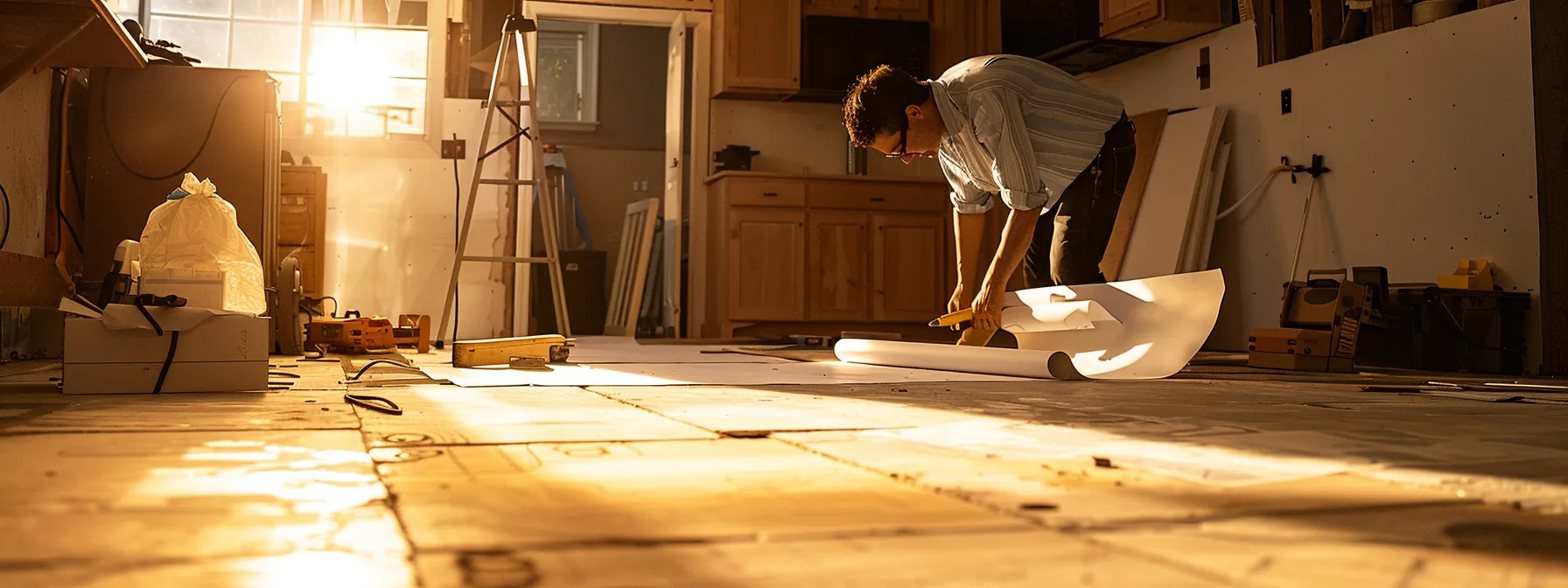
Assessing basement renovation needs involves evaluating the current condition, defining the space’s purpose, and setting clear goals. This process helps homeowners plan effectively, considering utility placement, drywall installation, and potential bathroom additions. Understanding these aspects ensures a successful renovation meeting functional requirements and budget constraints.
Evaluating Your Basement’s Current Condition
The first step in basement renovation is thoroughly evaluating the current space. This assessment includes examining the walls for signs of moisture or structural issues, which can significantly impact the cost of basement renovations. Proper lighting is also crucial, as many basements lack natural light sources.
A comprehensive basement layout inspection is essential to maximize space utilization. This involves measuring the available area and identifying potential obstacles, such as support columns or utility installations. Understanding these elements helps plan an efficient renovation that aligns with the homeowner’s vision and budget.
Evaluating the existing utilities is another critical aspect of basement assessment. This includes checking the electrical system, plumbing, and HVAC components. If a kitchen or bathroom is part of the renovation plan, ensuring adequate utility connections can prevent unexpected costs and delays during the project.
Defining the Purpose of Your Renovated Space
Defining the purpose of a renovated basement is crucial for effective home improvement planning. Homeowners must consider whether the space will serve as an additional living area, home office, or entertainment room. This decision influences the layout, including joist placement and foam insulation requirements, ensuring optimal functionality and comfort.
The intended use of the basement dictates essential interior design elements. For instance, a home theater may require soundproofing and specialized lighting, while a gym needs proper ventilation and durable flooring. Careful consideration of these factors helps create a cohesive design that aligns with the home aesthetic and meets specific needs.
Flexibility in basement design can maximize the space’s potential. Incorporating multifunctional elements, such as movable partitions or convertible furniture, allows the room to adapt to changing needs over time. This approach ensures the renovated basement remains a valuable asset for long-term home improvement.
Setting Clear Renovation Goals
Setting clear renovation goals is essential for a successful basement project. Homeowners should prioritize waterproofing to prevent moisture and ensure a dry and comfortable living space. This step is crucial before proceeding with any cosmetic improvements or functional additions.
Determining the desired layout and purpose of the renovated basement guides decision-making throughout the process. Whether creating a bedroom or a multipurpose area, the renovation plan should address specific needs such as adequate lighting and proper ventilation. These considerations impact the selection of materials and fixtures.
Establishing a realistic budget and timeline helps manage expectations and avoid project delays. Homeowners should allocate funds for essential elements like quality paint and efficient lighting fixtures, which significantly enhance the basement’s appearance and functionality. Prioritizing these goals ensures a renovation that adds value to the home and meets the family’s needs.
With needs assessed, the real work begins. Now, we plan the basement’s transformation.
Planning Your Basement Renovation Project
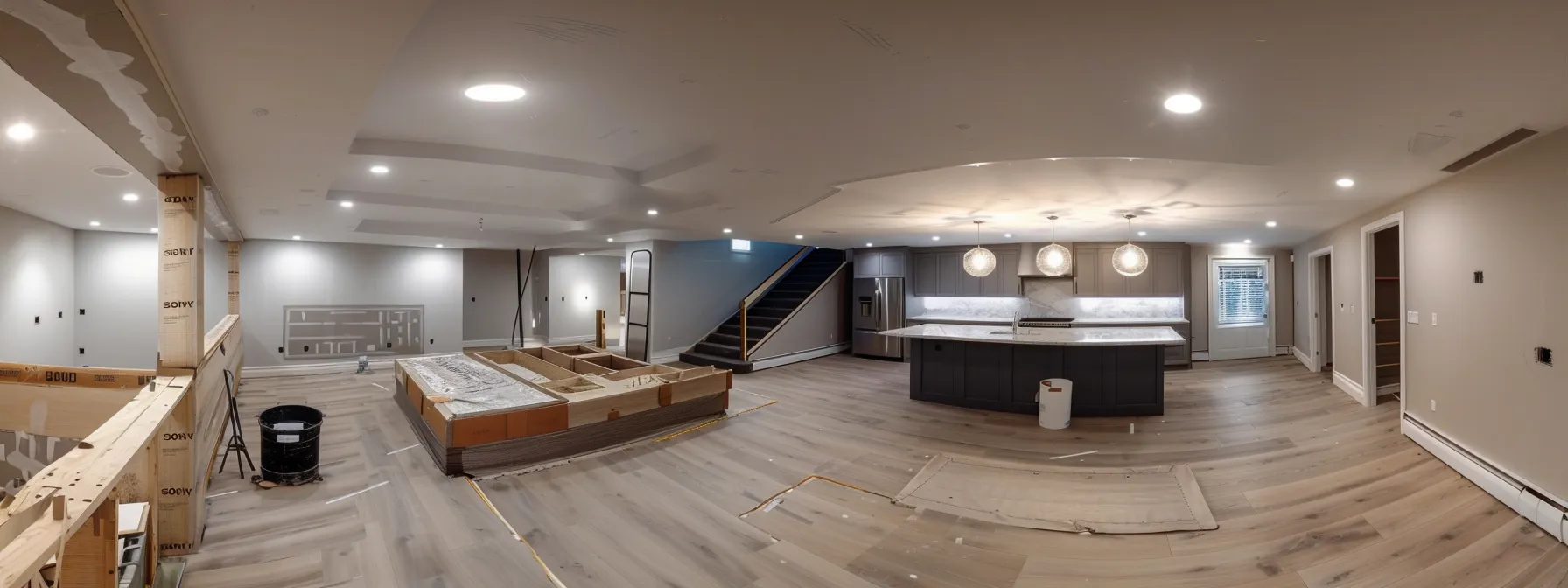
Planning a basement renovation requires careful consideration of budget, timeline, and design. A realistic budget ensures proper allocation for essential elements like electrical wiring and emergency exits. Creating a detailed timeline helps manage the construction process efficiently. Designing the layout and features involves balancing functionality with aesthetic preferences, potentially impacting home insurance considerations.
Establishing a Realistic Budget
Establishing a realistic budget for basement renovation requires careful consideration of square footage and price estimates. Homeowners should calculate costs per square foot, determining materials, labor, and potential unforeseen expenses. A general contractor can provide accurate pricing based on the project scope and local market rates.
Key budget components include essential systems like ventilation and waterproofing. Installing a sump pump, for instance, is crucial for moisture control and can significantly impact the overall cost. Prioritizing these elements ensures a functional and comfortable living space while preventing future issues.
Budget allocation should account for both structural and aesthetic aspects of the renovation. The following table outlines typical cost breakdowns for various basement renovation elements:
Creating a Detailed Timeline
Creating a detailed timeline for basement renovation ensures compliance with building codes and streamlines the project. Homeowners should allocate time to obtain necessary permits, which can take several weeks in Toronto. This initial phase is crucial for avoiding delays and potential legal issues during construction.
The timeline should account for each renovation stage, from demolition to final touches. Addressing potential mold issues early in the process prevents health hazards and costly setbacks. Scheduling inspections at critical points helps maintain project momentum and ensures all work meets local regulations.
Interior designers or homeowners should incorporate furniture selection and placement to create a functional and aesthetically pleasing space in the latter stages of the timeline. Allowing ample time for delivery and installation prevents rushed decisions that may compromise the overall design. Homeowners should plan for a buffer period to accommodate unexpected challenges, ensuring a smooth transition from construction to a fully functional living space.
Designing the Layout and Features
Designing the layout for a basement renovation in the Greater Toronto Area requires careful consideration of water management and accessibility. Homeowners must prioritize proper drainage systems and waterproofing to prevent moisture issues common in basement spaces. This approach ensures a dry, comfortable environment suitable for various uses, including potential basement apartments.
Designers focus on maximizing space efficiency when planning a basement apartment layout while adhering to local building codes. They often incorporate open floor plans to create a sense of spaciousness and improve natural light distribution. Strategic window placement and light colors can further enhance the perception of space in basement apartments.
Accessibility features are crucial in modern basement designs, especially for homeowners considering aging in place or accommodating diverse needs. Incorporating wider doorways, non-slip flooring, and well-lit pathways enhances safety and usability. These thoughtful design elements improve the space’s functionality and increase its overall value in the Greater Toronto Area real estate market.
Money talks. Let’s break down the costs of your basement renovation.
Comprehensive Breakdown of Basement Renovation Costs
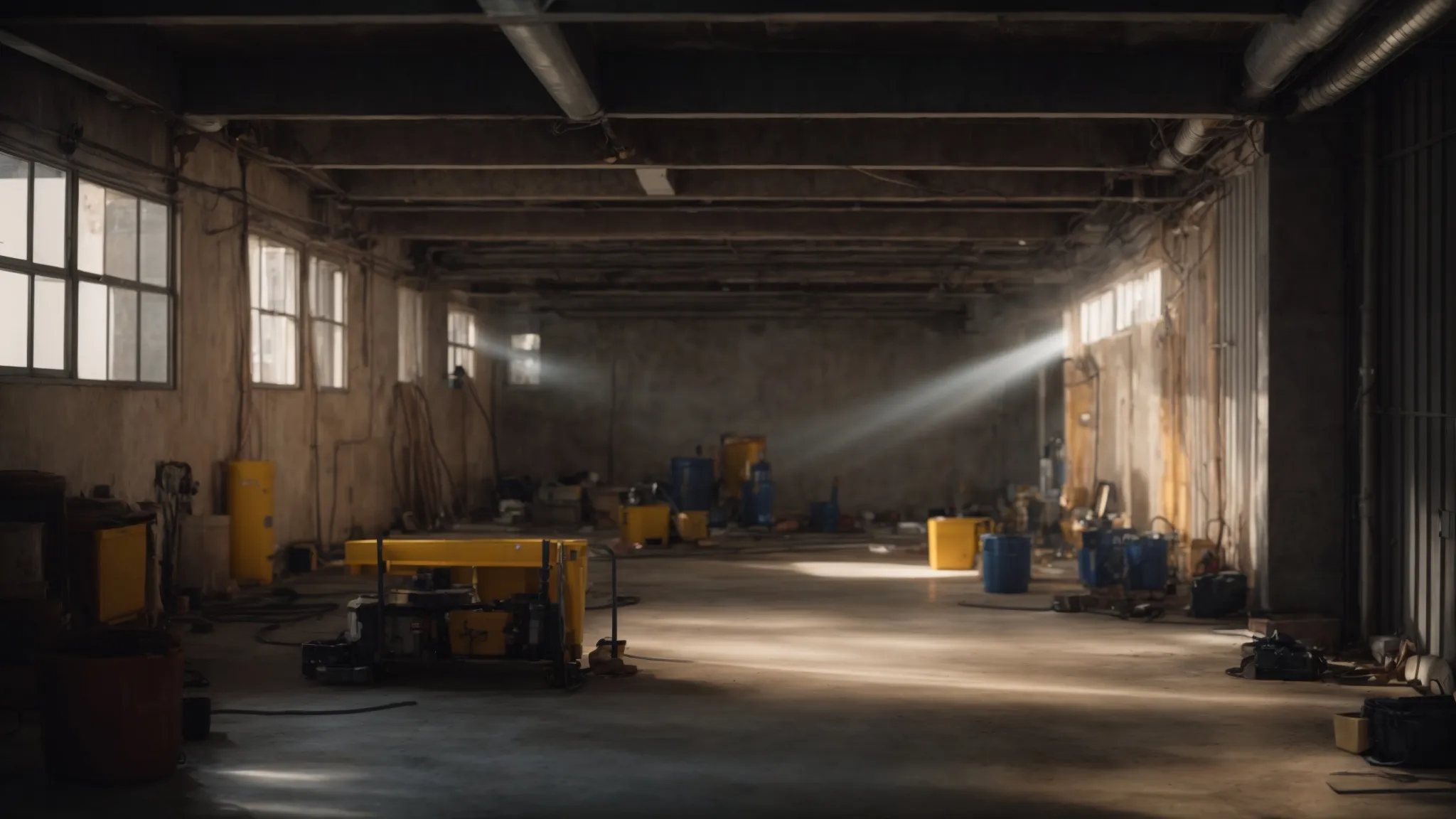
Basement renovation costs in Canada encompass various elements, from structural work to finishing touches. This breakdown explores expenses for foundation repairs, mechanical systems, including electrical and plumbing, and finishing costs for walls and floors. It covers amenities like bathrooms, permit fees, and specialized features like soundproofing and sump pump installation. Understanding these costs helps homeowners plan effectively and ensure warranty coverage.
Structural and Foundation Expenses
Structural and foundation expenses form a significant portion of basement renovation costs. These include essential tasks such as waterproofing, which prevents potential flood damage and ensures a dry living space. Concrete repair or replacement may be necessary to address existing issues and strengthen the foundation, impacting the overall expense.
Framing costs contribute to the structural integrity of the renovated basement. This process involves creating a framework for walls and ceilings, which supports the installation of drywall and insulation. Proper framing also integrates electrical wiring and plumbing systems, ensuring a functional and code-compliant space.
Addressing any existing structural issues is crucial before proceeding with aesthetic improvements. This may involve reinforcing support beams, repairing cracks, or installing additional support columns. While these expenses can be substantial, they are essential for ensuring the long-term stability and safety of the renovated basement.
Mechanical Systems: Electrical, Plumbing, HVAC
Electrical systems in basement renovations require careful planning to ensure safety and functionality. Licensed electricians must install new circuits, outlets, and lighting fixtures in Ontario to meet local building codes. Proper electrical work prevents moisture-related hazards and supports various appliances and entertainment systems commonly found in finished basements.
Plumbing considerations are crucial, especially when adding bathrooms or wet bars to basements. Contractors often install sump pumps to manage potential moisture issues and prevent flooding. Additional waterproofing measures may be necessary in areas prone to high water tables, such as parts of Ontario, to protect plumbing systems and maintain a dry environment.
HVAC upgrades play a vital role in basement comfort and air quality. Proper ductwork design ensures efficient heating and cooling distribution throughout the space. Contractors may recommend installing a separate HVAC zone for the basement to improve temperature control and energy efficiency. The following table outlines typical costs for mechanical systems in basement renovations:
Finishing Costs: Walls, Floors, Ceilings
Finishing costs for walls, floors, and ceilings significantly impact the basement renovation budget and potential return on investment. Homeowners should prioritize moisture-resistant materials to prevent water damage and mold growth. Spray foam insulation offers excellent moisture protection and energy efficiency for walls, while vinyl or tile flooring provides durability and water resistance.
Ceiling finishes require careful consideration, especially in basements with low headroom. Drop ceilings allow easy access to utilities but may reduce ceiling height. Alternatively, drywall ceilings create a seamless look but limit access to plumbing and electrical systems. Homeowners should factor in the cost of soundproofing materials to minimize noise transmission between floors.
In basement renovations, window installation or replacement is crucial for natural light and ventilation. Egress windows, while more expensive, are often required by building codes for safety reasons. A comprehensive renovation checklist should include window treatments that enhance privacy and light control, contributing to the overall comfort and functionality of the space.
Additional Amenities: Bathrooms, Kitchens, and More
Adding a bathroom to a basement renovation significantly enhances functionality and property value. Homeowners should consider moisture-resistant materials and proper ventilation to combat humidity issues common in below-grade spaces. Installing a bathroom near existing plumbing can reduce costs while ensuring adequate drainage prevents foundation damage.
Incorporating a kitchenette or wet bar transforms a basement into a versatile entertainment area or potential rental unit. Careful planning of electrical and plumbing layouts optimizes the space’s efficiency. Homeowners should balance the investment in high-quality appliances with potential returns, especially if creating a secondary suite.
Customizing the basement with amenities like a home theater or man cave requires thoughtful design and budgeting. Integrating comfortable seating, proper lighting, and sound systems enhances the space’s appeal. When planning these additions, homeowners should consider the impact on overall home value and ensure easy access with well-designed stairs.
Permit and Inspection Fees
Permit and inspection fees for basement renovations vary based on project complexity and local regulations. Homeowners should factor these costs into their budget, as they are essential for ensuring compliance with building codes. The fees typically cover plan reviews, multiple inspections throughout the renovation process, and final approval.
The cost of permits can increase if the renovation includes adding a gym or extensive cabinetry. Municipalities often charge based on the scope of work, with more complex projects requiring additional reviews and inspections. Homeowners should consult their local building department for accurate fee estimates before renovating.
Inspections are crucial in verifying the proper installation of light fixtures and ensuring adequate daylight in basement spaces. These checks help maintain safety standards and improve the overall quality of the renovation. The following table outlines typical permit and inspection fees for basement renovations:
When costs are laid bare, the true scope of basement renovation emerges. Now, let’s explore smart ways to keep those expenses in check.
Strategies to Manage and Reduce Renovation Costs
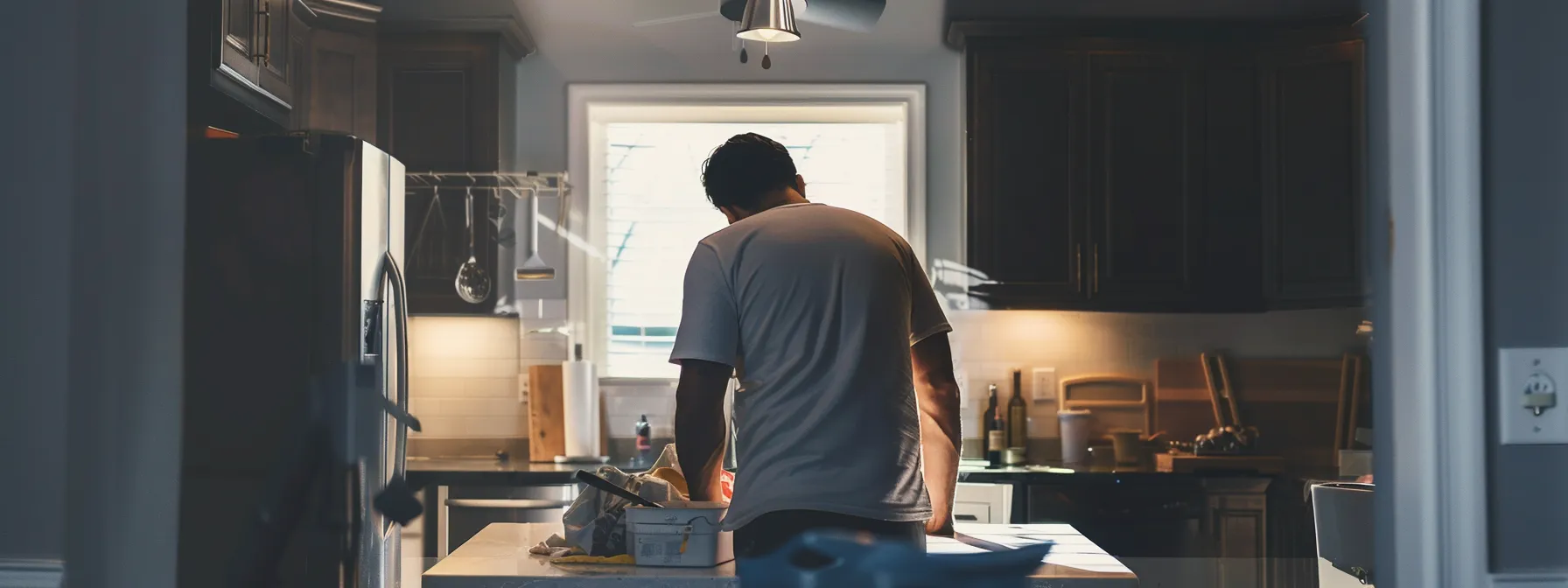
Managing basement renovation costs effectively involves strategic planning and decision-making. Homeowners can prioritize essential upgrades like waterproofing and sump pump installation, choose cost-effective materials, balance DIY efforts with professional work, and compare multiple contractor quotes. These strategies help create a dream basement while maximizing the potential for additional income, all within budget constraints.
Prioritizing Essential Upgrades
Prioritizing essential upgrades in basement renovations focuses on addressing critical issues first. Homeowners should start with proper drainage systems and waterproofing to prevent moisture damage. Installing a sump pump and addressing existing water issues lays the foundation for a dry, comfortable space.
The next priority is ensuring adequate heating and ventilation. Upgrading the HVAC system or adding baseboard heaters improves comfort and prevents mold growth. Proper insulation complements these efforts, enhancing energy efficiency and reducing long-term costs.
While aesthetic elements like wood flooring, showers, and fireplaces can enhance the space, they should be considered secondary to essential structural and functional improvements. Homeowners can plan for these features in later renovation phases, ensuring the basement’s core functionality and safety are addressed first.
Choosing Cost-Effective Materials
Selecting cost-effective materials for basement renovations in Mississauga involves balancing quality and affordability. Homeowners can opt for engineered wood flooring, which offers durability and moisture resistance at a lower cost than solid hardwood. This choice provides a warm, aesthetic appeal while withstanding the unique conditions of basement environments.
Moisture-resistant drywall is a practical and economical option for walls and ceilings. It helps prevent mold growth and withstands humidity better than standard drywall, reducing long-term maintenance costs. When planning a kitchenette, consider laminate countertops as a budget-friendly alternative to stone. They offer a wide range of designs that mimic more expensive materials.
Choosing suitable materials can significantly impact a basement renovation’s overall cost and success. Homeowners should prioritize materials that offer long-term value and require minimal maintenance. This approach ensures a balance between initial costs and future expenses, creating a space that remains functional and appealing over time:
- Evaluate moisture resistance of all materials
- Compare long-term durability versus initial costs
- Consider ease of maintenance and cleaning
- Select materials that meet local building codes
- Factor in energy efficiency for insulation choices
Balancing DIY and Professional Work
Balancing DIY and professional work in basement renovations can significantly impact costs and quality. Homeowners with experience in construction may tackle more straightforward tasks like painting or installing a vapor barrier and serving in complex jobs for professionals. This approach can reduce labor costs while ensuring critical elements, such as electrical work or countertop installation, meet safety standards and building codes.
Professional expertise is crucial for specialized features like home theatres or structural modifications. An architect can provide valuable insights on optimizing space and meeting local regulations, potentially saving costs in the long run. For intricate projects, the expertise of professionals often outweighs potential DIY savings, ensuring a higher-quality finished product.
Homeowners should realistically assess their skills and time constraints when deciding between DIY and professional work. While DIY can reduce immediate costs, it may extend the project timeline and potentially compromise quality if not executed properly. Striking the right balance ensures a successful renovation that maximizes value and minimizes stress.
Comparing Multiple Contractor Quotes
Comparing multiple contractor quotes for basement renovations helps homeowners make informed decisions about energy-efficient upgrades. Contractors may suggest different approaches to insulation, such as fiberglass or spray foam, which can impact long-term energy costs. To ensure comprehensive comparisons, homeowners should request detailed breakdowns of materials and labor costs, including options for moisture control like dehumidifiers.
When evaluating quotes, homeowners should consider how contractors address potential issues like rain penetration or water damage. Experienced professionals often include preventive measures in their estimates, such as proper drainage systems or waterproofing solutions. This foresight can prevent costly repairs and protect hardwood flooring or other sensitive materials in the finished basement.
Contractors may offer varying opinions on flooring options, from cost-effective laminate to premium hardwood. Homeowners should weigh these recommendations against their budget and desired aesthetic, considering factors like durability and maintenance requirements. Homeowners can identify the best value for their basement renovation project by thoroughly comparing quotes and discussing options with multiple contractors.
The blueprint for cost-effective renovations was clear. Now, the legal maze awaited, with its permits and codes.
Navigating Legal Requirements and Building Codes

Navigating legal requirements and building codes is crucial for basement renovations. This section covers obtaining necessary permits, ensuring compliance with local regulations, and incorporating safety measures. Understanding these aspects is essential for projects ranging from simple upgrades to complex additions like a home cinema or sauna. Proper planning and adherence to regulations help create a safe, legal, and functional basement space.
Obtaining Necessary Permits
Obtaining necessary permits is a crucial step for homeowners planning basement renovations. Local building departments require permits to ensure safety and compliance with current building codes. Real estate professionals often advise clients to secure proper documentation before commencing any work, as unpermitted renovations can affect property value and future sales.
The permit process typically involves submitting detailed plans of the proposed basement renovation to the local authorities. These plans should include electrical layouts, plumbing schematics, and structural modifications. Homeowners may need to engage a professional architect or engineer to prepare these documents, especially for complex projects like adding a bathroom or creating a separate basement apartment.
Timely permit acquisition can prevent costly delays and legal issues during basement renovations. Owners should factor permit fees into their renovation budget and allow sufficient time for the approval process. Some municipalities offer expedited services for an additional cost, benefiting those working with tight timelines. The following steps outline the typical permit acquisition process:
- Research local zoning laws and building codes
- Prepare detailed renovation plans
- Submit permit application with required documentation
- Pay necessary fees
- Schedule and pass required inspections
- Obtain final approval and occupancy permit
Ensuring Compliance With Local Regulations
Complying with local regulations is crucial for basement renovation projects in Brampton and surrounding areas. Homeowners must familiarize themselves with specific requirements for ceiling height, window sizes, and emergency exits. Basement contractors are vital in navigating these regulations and ensuring renovations meet all safety standards and building codes.
Proper insulation and moisture control are key compliance aspects concerning the roof and foundation interface. Contractors must address potential water infiltration issues and install appropriate vapor barriers to prevent mold growth. In Brampton, specific guidelines exist for applying joint compounds and other finishing materials to ensure durability and fire resistance.
Homeowners should be aware that renovations can impact property assessments and taxes. Proper permits and documentation for all work completed are essential, as this affects the property’s value and legality. Basement contractors in Brampton can guide homeowners through updating property records and ensuring all renovations are appropriately documented and compliant with local regulations.
Incorporating Safety Measures for Basements
Incorporating safety measures in basement renovations is crucial, especially when adding features like laundry facilities or power tools. Homeowners should prioritize the installation of smoke detectors and carbon monoxide alarms, ensuring they are interconnected with other alarms in the house. Proper ventilation systems are essential, particularly in areas with baseboard heating or where moisture accumulation is likely.
Electrical safety is paramount in basement renovations. Homeowners should consider upgrading the electrical panel to accommodate new appliances and ensure all outlets are GFCI-protected, especially near water sources. When planning a low-cost basement finishing project, it’s essential not to compromise on electrical safety measures, as they protect against potential fire hazards and electrical shocks.
Egress windows are a critical safety feature in basement renovations, providing an emergency exit in case of fire. Local building codes typically specify these windows’ minimum size and location requirements. While installing egress windows can be a significant expense, they are essential for safety and potentially increase home equity. Homeowners considering home equity loans for renovations should factor in the cost of these safety improvements.
After mastering the codes, it’s time to find the right hands for the job. Skilled professionals await, ready to turn plans into reality.
Selecting the Right Professionals for Your Renovation

Selecting the right professionals for basement renovations in Vaughan is crucial for achieving the desired aesthetics and functionality. This section covers researching contractors, evaluating quotes, and checking references. Homeowners will learn to assess services, including air conditioning and sink installations, ensuring quality work within budget and timeline constraints.
Researching and Shortlisting Contractors
Researching and shortlisting contractors for basement renovations requires carefully considering their expertise in specific areas, such as wet bar installations and entertainment room setups. Homeowners should seek professionals with proven experience in carpentry and ceramic work, ensuring they can handle various aspects of the project. Online reviews and portfolios can provide valuable insights into a contractor’s capabilities and past performance.
When evaluating potential contractors, assessing their ability to create custom features like mancave or entertainment centers is essential. Homeowners should inquire about the contractor’s approach to seamlessly integrating these elements into the basement design. Requesting detailed project timelines and cost breakdowns for specific features can help compare different contractors’ offerings.
Shortlisting contractors should involve verifying their licenses, insurance, and certifications relevant to basement renovations. Homeowners should prioritize professionals who demonstrate knowledge of local building codes and have experience obtaining necessary permits. Arranging in-person consultations allows a better assessment of the contractor’s communication style and willingness to accommodate specific design preferences for elements like wet bars or entertainment systems.
Evaluating Quotes and Services Offered
When evaluating quotes for basement renovations in Calgary, homeowners should pay close attention to the services offered, particularly regarding temperature control systems. Contractors should provide detailed breakdowns of HVAC installations, including the cost of thermostats and switches, to ensure optimal comfort in the renovated space. It’s crucial to compare these offerings across multiple quotes to identify the most comprehensive and cost-effective solutions.
For condominium basement renovations, homeowners must consider quotes addressing shared building structures’ unique challenges. Contractors should demonstrate expertise in soundproofing and adhere to condo board regulations. Evaluating quotes should also include assessing the contractor’s moisture control approach, particularly their caulking and sealing plans to prevent water damage in below-grade spaces.
Homeowners should prioritize quotes that offer comprehensive services, including post-renovation support and warranties. This is especially important for complex projects involving electrical work or plumbing installations. A thorough evaluation of services should consider the contractor’s ability to handle unexpected issues, such as the need for additional waterproofing or structural reinforcements, which are common in basement renovations.
Checking References and Past Projects
Checking references and past projects is crucial when selecting professionals for basement renovations in Etobicoke. Homeowners should request a list of completed projects, particularly those involving building and architectural elements similar to their planned renovation. This allows for a comprehensive assessment of the contractor’s expertise and quality of work.
When evaluating past projects, homeowners should pay close attention to the architectural details and overall build quality. It’s beneficial to visit completed basements to assess firsthand the contractor’s attention to detail, from nail placement to finishing touches. This hands-on approach provides valuable insights into the contractor’s craftsmanship and ability to bring architectural visions to life.
Contacting previous clients can offer invaluable information about the contractor’s work ethic, communication style, and ability to manage timelines and budgets. Homeowners should inquire about the contractor’s problem-solving skills, especially in handling unexpected issues that often arise in basement renovations. This due diligence helps ensure the selection of a reliable professional who can transform the basement while maintaining the homeowner’s interests throughout the project.
With the right professionals chosen, your vision takes shape. Let’s prepare for the final push with a comprehensive basement renovation checklist.
Finalizing Your Basement Renovation Checklist
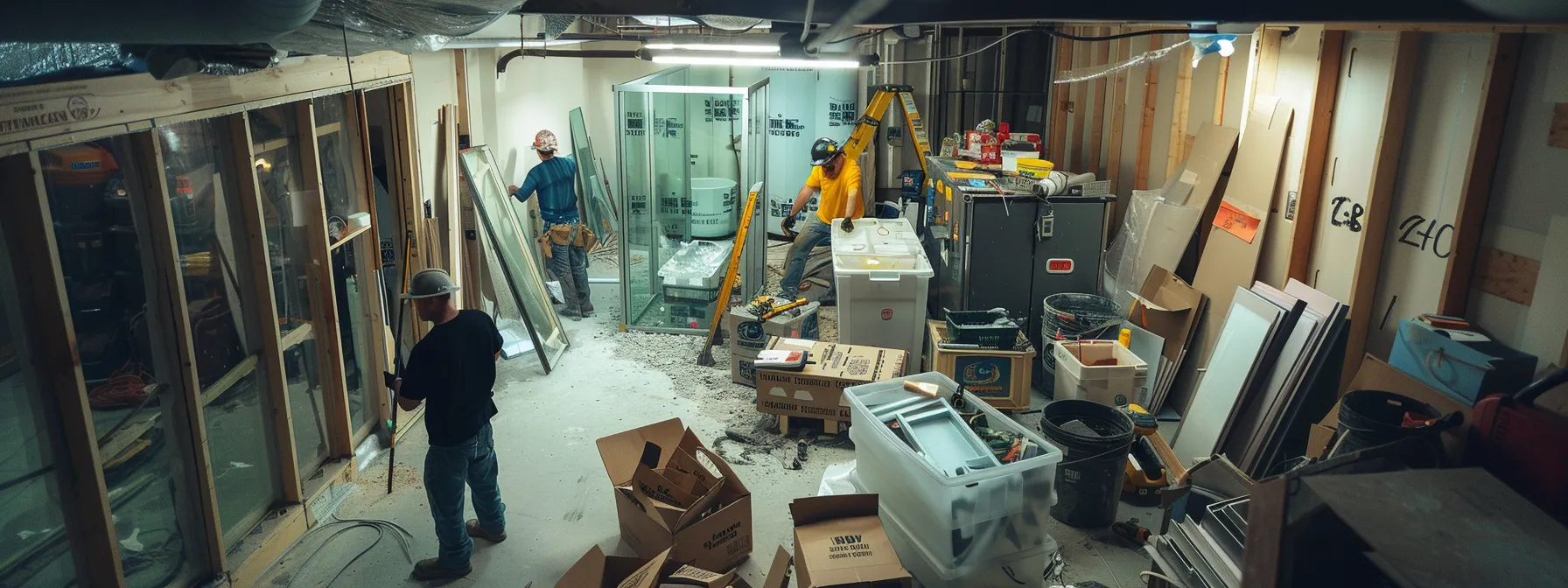
Finalizing a basement renovation checklist involves crucial steps to ensure project success. This section covers confirming project details with contractors, including glass installation and laundry room specifications. It also addresses preparing the home for construction work, emphasizing customer satisfaction. Lastly, it explores monitoring progress and quality control, highlighting the importance of a comprehensive punch list that includes elements like toilet installation.
Confirming Project Details With Contractors
Confirming project details with contractors is crucial for ensuring a smooth basement renovation. Homeowners should review plans for installing laminate flooring and discuss the specific type and quality of materials. This conversation should consider potential moisture issues in the basement and how the chosen flooring will withstand these conditions.
Contractors and homeowners must establish clear emergency procedures and dust control measures before work begins. Discussing how contractors will handle unexpected issues, such as discovering mold or structural problems, helps prevent delays and misunderstandings. Agreeing on dust containment methods protects the rest of the home from construction debris and maintains air quality.
Precise measurements are essential for accurate planning and budgeting. Homeowners should ensure contractors use a reliable tape measure to verify all dimensions, including ceiling height and window openings. This attention to detail helps avoid costly mistakes in material ordering and ensures a proper fit for elements like cabinetry and built-in features.
Preparing Your Home for Construction Work
Preparing a home for basement construction involves safeguarding valuables and addressing potential issues. Homeowners should move valuable items to secure locations, protecting them from dust and possible damage. It’s crucial to inspect the area for any signs of water leaks or pest infestations, addressing these problems before construction begins to prevent costly setbacks.
Proper soil assessment around the foundation is essential before commencing basement renovations. Homeowners should ensure contractors evaluate soil conditions to prevent future moisture issues that could compromise the renovation. This proactive approach can save money in the long run by avoiding water-related damage to the newly renovated space.
Creating a turnkey renovation plan helps streamline the construction process and minimize disruptions to daily life. Homeowners should establish clear pathways for workers and designate areas for material storage. If necessary, setting up temporary living arrangements ensures comfort during the renovation while allowing contractors unimpeded access to complete the project efficiently.
Monitoring Progress and Quality Control
Monitoring progress during basement renovations in Ottawa involves regular inspections of critical elements such as the concrete slab and wall studs. Homeowners should schedule periodic site visits with their contractors to assess the quality of work and ensure adherence to the agreed-upon timeline. These checks help identify potential issues early, preventing costly delays and maintaining the project’s momentum.
Quality control measures should include verifying the installation of essential components like vapor barriers and insulation before the drywall phase begins. Homeowners should request detailed documentation of each completed stage, including photographs of electrical and plumbing work before walls are closed. This thorough approach supports informed decision-making throughout the renovation process and provides valuable records for future reference.
Establishing a clear payment schedule linked to specific milestones, such as the completion of demolition or framing, incentivizes contractors to maintain high standards and meet deadlines. Homeowners should reserve final payment until a thorough inspection confirms all work meets the agreed specifications and local building codes. This strategy ensures the renovation delivers the desired results while protecting the homeowner’s investment.
Conclusion
Comprehensive basement renovation planning is essential for homeowners seeking to maximize their property’s value and functionality. This guide emphasizes the importance of assessing needs, establishing realistic budgets, and navigating legal requirements to ensure a successful transformation of underground spaces. By carefully selecting materials, balancing DIY efforts with professional expertise, and prioritizing essential upgrades, homeowners can create stunning basements that enhance living quality while managing costs effectively. Ultimately, a well-executed basement renovation not only adds valuable living space but also contributes significantly to the overall comfort and appeal of the home.

